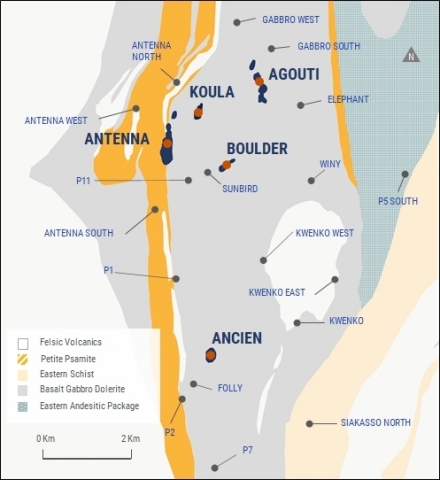The new mining code for Djibouti, in East Africa – which, once implemented, will replace the current regulations implemented in 1994 – aims to update the framework for exploration, surveying and land titles and increase enforcement measures, including rolling out new penalties for non-compliance.
In mid-April the National Assembly’s committee on legislation and general administration met to review a draft law to revise the country’s mining code.
The deputies agreed to continue working on the legislation prior to submitting the bill at the next sitting of the National Assembly.
According to the authorities, the development of the sector will go hand-in-hand with the country’s major infrastructure projects, which total $14 billion and include port facilities specialising in mineral exports, new road projects and improvements to the electrical grid.
At present, mining accounts for between 1% and 3% of Djibouti's GDP, according to estimates from the World Bank and the African Development Bank.
Government efforts to improve the mining investment environment are part of a concentrated effort to diversify the economy and improve the broader investment climate - a central part of the Djibouti Vision 2035 strategy for economic development and inclusive growth.
Global publishing, research and consultancy firm the Oxford Business Group, summed up some of the highlights and implications that the revamped mining code could have for investment in the country's resource sector.
Mapping Djibouti’s natural resources
The consultation on the new mining code follows the government’s completion in late 2015 of a nationwide survey of the country’s mineral resources.
The “Inventory of Industrial Minerals in Djibouti”, whose results helped inform the updated regulations, found new deposits of sandstone, limestone and ornamental stones in Ali Sabieh in the south; corallian limestone, clay and pumice in Tadjourah; and ilmenite sand, corrallin limestone and ornamental stones in Obock in the north.
Rural dividend
Development of the mining sector is being used to improve local content participation in large-scale industrial value chains, encouraging the establishment of small and medium-sized enterprises (SMEs) and promoting local processing and refining for mineral products used in construction and agriculture.
“These industrial minerals and rocks are necessary for the development of sectors like construction, public works, agriculture and the ceramics industry,” says Minister of Energy and Natural Resources Ali Mahmoud Yacoub.
According to the Minister, a robust mining sector will also encourage the growth of SMEs in related industries as the mining sector brings greater investment to rural communities.
This aligns with government efforts to address rising unemployment and persistent poverty, with 42% of the population living in extreme poverty and 48% unemployed, as well as attempts to reduce rural migration, which is straining urban infrastructure.
With more than 500 000 Djiboutians living in the capital and more than three-quarters of the population residing in urban centres, the country also has a high urbanisation rate.
Gold and “white gold” in Djibouti
The revised mining code, and its focus on new sources of industrial minerals, comes as Djibouti works to develop some of its other existing mineral deposits.
Authorities identified salt – historically known as “white gold” and the main mineral produced in Djibouti – as the first priority for development.
Salt production, sourced from the hypersaline Lake Assal in central Djibouti, has fallen in recent years after the discovery of salt deposits in the Afar region of neighbouring Ethiopia.
At 155 m below sea level, Lake Assal is believed to have the largest unexplored salt reserves in the world, totalling around 100 Mt.
A new port dedicated to salt exports is expected to help shift focus back to Lake Assal, and Salt Investment, formerly a subsidiary of US-based Emerging Capital Partners, but now Chinese-owned, is developing a project to market the area’s salt resources.
Goubet Port, located some 40 km south of the Gulf of Goubet, close to Lake Assal, is scheduled for completion this year with an export capacity of 6 Mtpa. The $63 million project includes a new ore terminal and product storage area, and will help redevelop the road linking the lake and the port.
Meanwhile, the country’s first gold mining operation located near the Port of Djibouti is also projected to come on-line this year, providing further stimulus to extractive industries.
Located near the Port of Djibouti, the gold vent – which UK-based Stratex International aims to begin mining in September – is part of the company’s efforts to identify more than 2 Moz of gold deposits in the country.
Stratex International believes the mine’s location will lay the groundwork for eventual inland expansion and the infrastructure improvements needed to transport mining equipment and machinery.



















